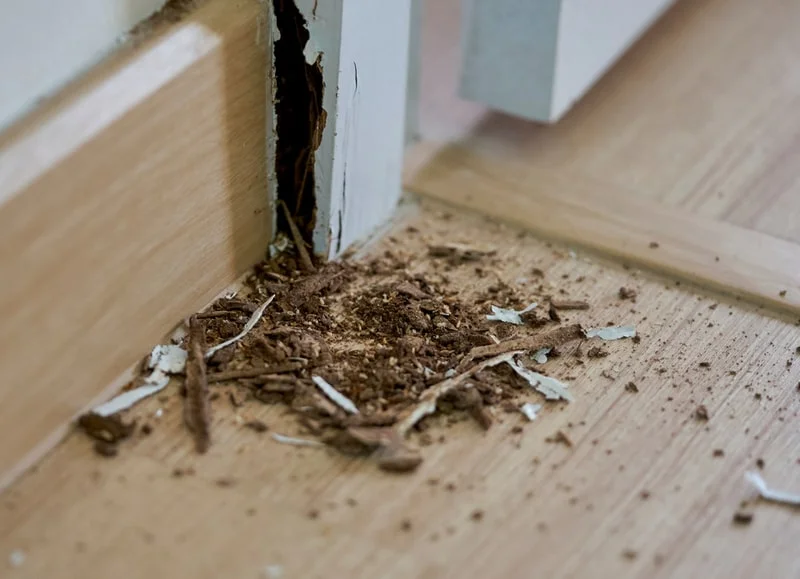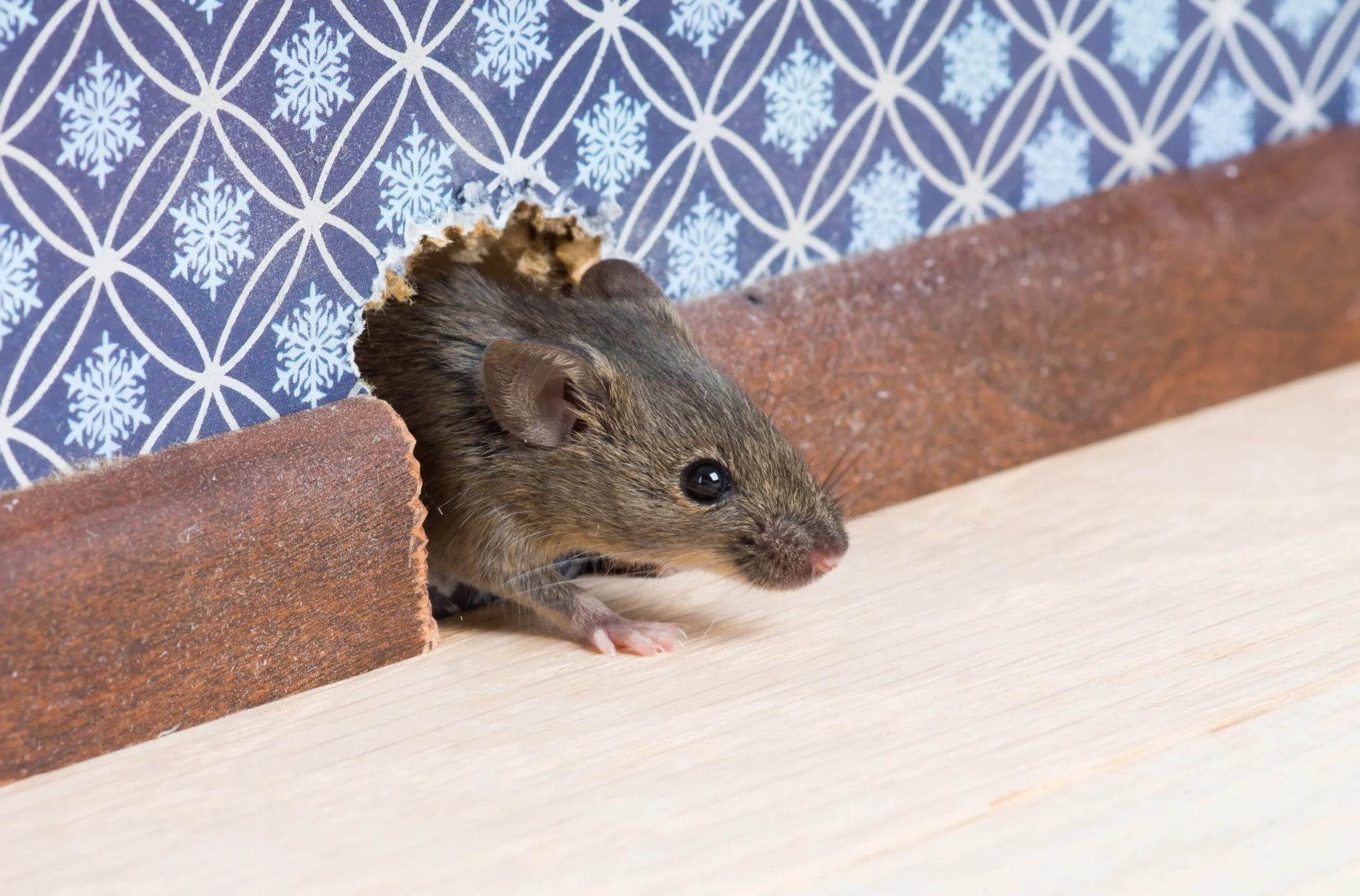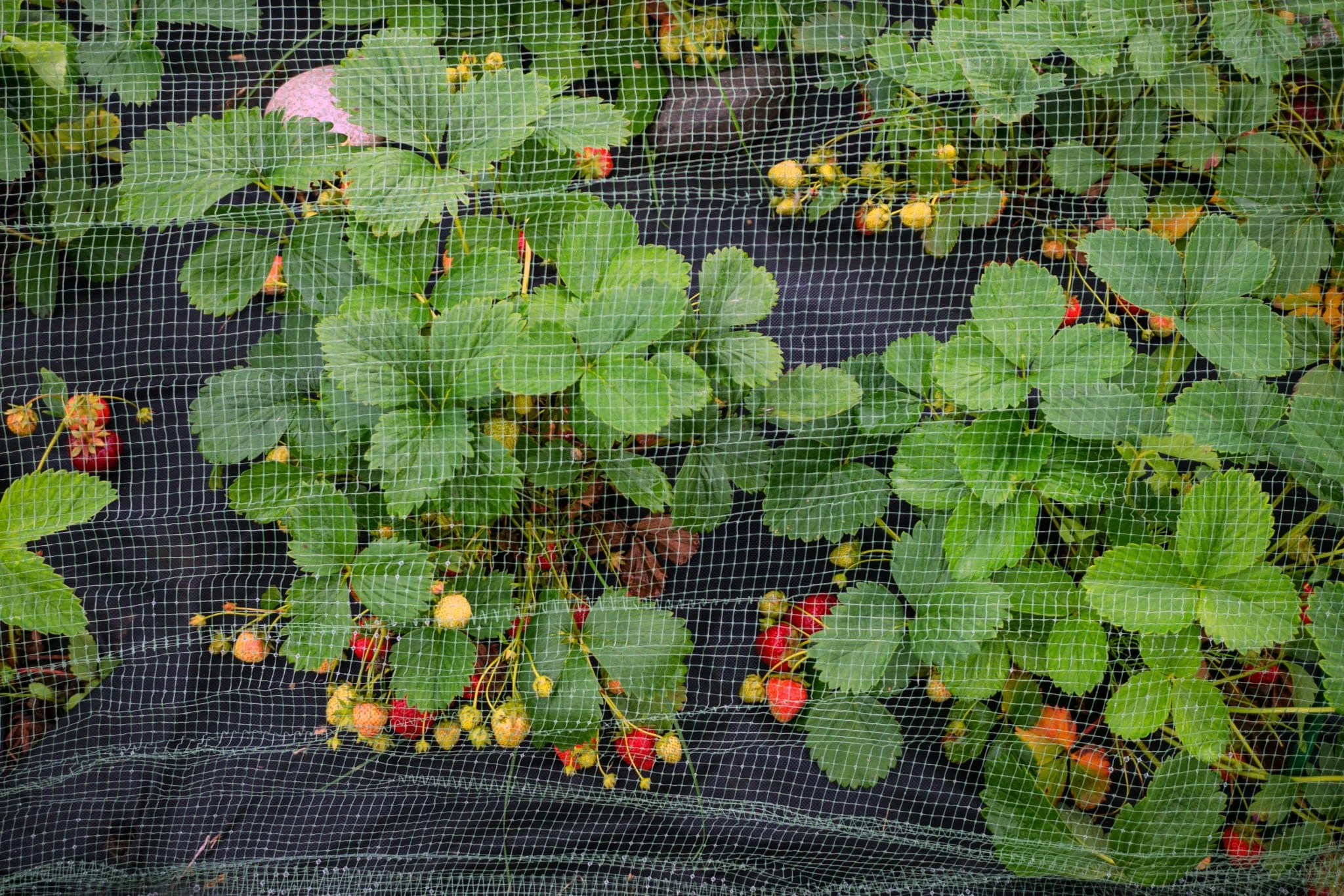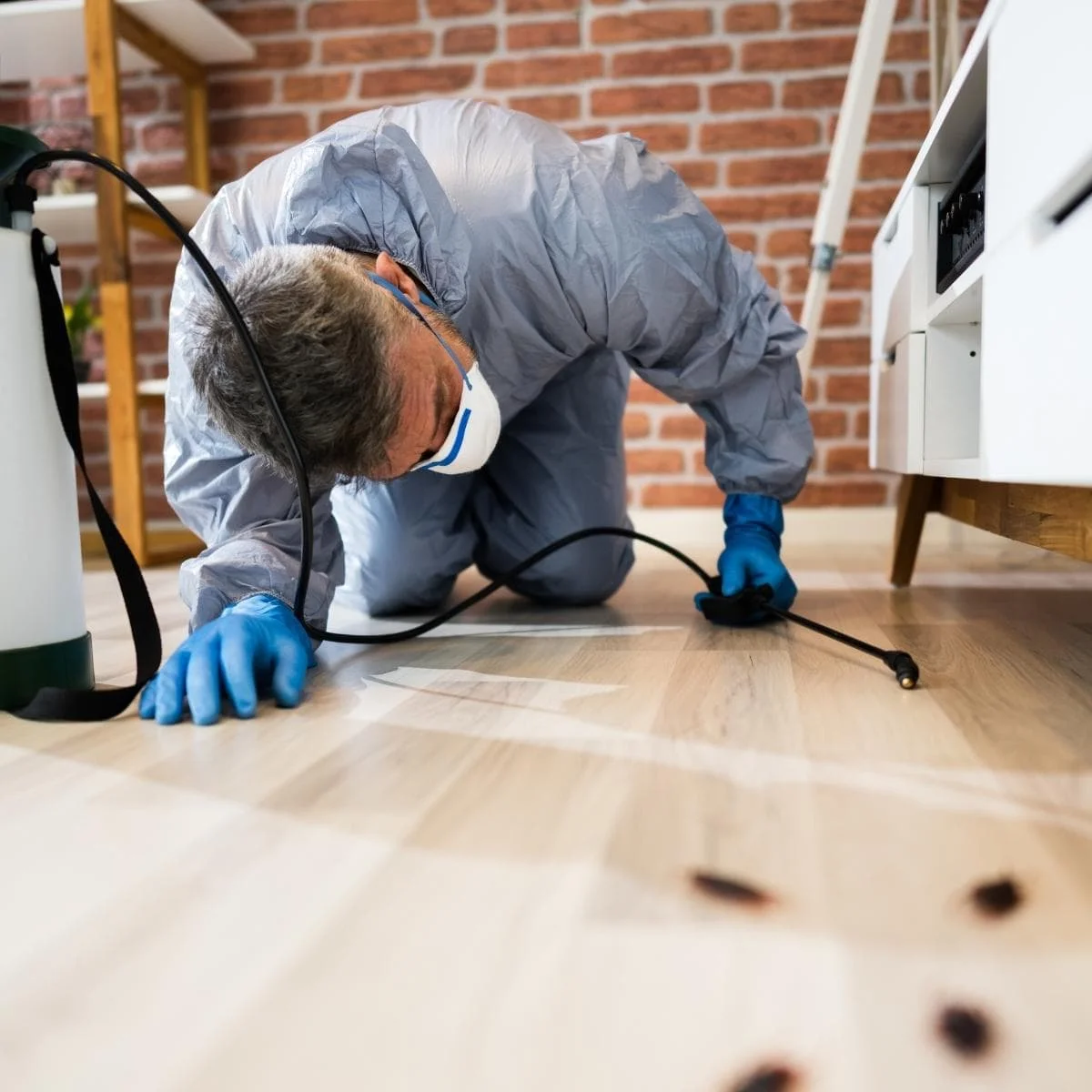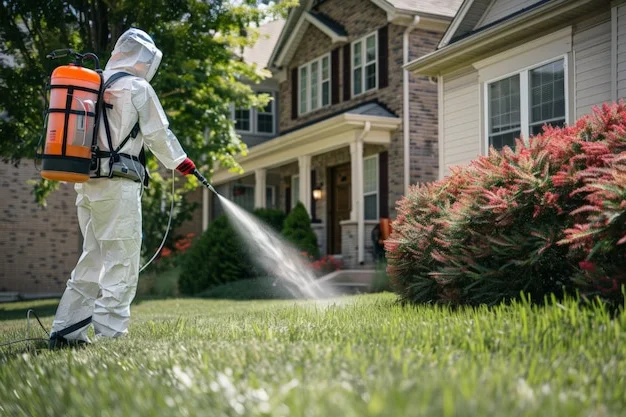From the eastern plains to the Rocky Mountain peaks and the western slopes, Colorado's dramatic elevation changes create distinct pest ecosystems within a single state. The Centennial State's combination of high altitude, arid climate, extreme temperature fluctuations, and four distinct seasons presents unique challenges for pest management and control. Effective pest control in Colorado requires specialized knowledge of these elevation-specific conditions, seasonal pest cycles, and treatment approaches that work in the state's distinctive environment.
Homes and businesses across Colorado face specific pest pressures that can damage structures, compromise health, and disrupt daily life in both urban centers and mountain communities. Whether dealing with miller moths in Denver, pine beetles in mountain towns, or prairie dog colonies along the Front Range, local professional exterminators provide essential expertise tailored to Colorado's specific regional challenges. This guide explores common Colorado pests, effective control strategies including eco-friendly pest solutions, and why the state's unique altitude and climate make professional knowledge particularly valuable for lasting protection.
Dealing with persistent Colorado pests? Our mountain state specialists offer
emergency pest control
24/7 and comprehensive
property inspections throughout Colorado.
Contact us today for prompt assistance!
Pest Control Challenges Specific to Colorado
Colorado's unique environment creates distinctive pest control challenges that require specialized approaches. Here's why pest management in the Centennial State demands expert attention:
-
Dramatic elevation changes Colorado's elevation ranges from 3,315 to over 14,000 feet, creating multiple climate zones within short distances. This variation means pest populations, behaviors, and treatment approaches differ significantly between Denver, mountain communities, and western slope locations.
-
Extreme temperature fluctuations Colorado's temperature can swing 40+ degrees in a single day, with intense summer sun and frigid winter nights. These fluctuations drive pests to seek shelter in structures more aggressively than in states with more stable climates.
-
Low humidity and intense UV exposure Colorado's arid conditions and powerful sun affect how treatments perform and persist. Conventional pest control products may break down faster or behave differently than in more humid environments, requiring specialized formulations and application techniques.
-
Seasonal pest migrations Colorado experiences unique seasonal pest phenomena including miller moth migrations, cluster fly invasions, and boxelder bug aggregations that require precisely timed treatments to prevent massive influxes into homes and businesses.
-
Wildlife-urban interface Many Colorado communities sit at the edge of natural areas, creating constant pressure from wildlife pests that move between undeveloped land and residential zones, particularly in foothill and mountain developments.
Understanding these Colorado-specific challenges is crucial for effective pest management. Professional pest control services develop customized treatment plans that address these regional factors, providing targeted protection for the state's distinctive environmental conditions.
Common Pests in Colorado
Colorado's environment supports a unique mix of pests influenced by elevation, climate, and seasonal patterns. Here are the most common invaders that plague the Centennial State:
Miller Moths
Professional inspection for miller moth entry points in a Colorado home
Miller moths represent one of Colorado's most distinctive seasonal pest phenomena. Each spring, these army cutworm moths migrate from the plains to the mountains, creating a weeks-long invasion period where they enter homes, businesses, and vehicles in staggering numbers. While not harmful, their presence, excrement, and attraction to light fixtures create significant nuisance issues for Colorado residents.
Professional miller moth management focuses on comprehensive exclusion work to seal entry points around doors, windows, and utility penetrations. Strategic light management recommendations reduce attraction to structures, while targeted treatments of resting areas help minimize indoor invasions. For Colorado properties, preventative services timed just before migration season provide the best protection against these annual invaders.
Spiders
Professional treatment for spider control around a Colorado home
Colorado hosts several spider species of concern, with black widows being the most medically significant. These venomous arachnids thrive in Colorado's dry climate, particularly along the Front Range and western regions, hiding in firewood piles, outdoor furniture, and undisturbed areas of sheds and garages. Brown recluse spiders, contrary to common belief, are not endemic to Colorado but may occasionally be transported into the state.
Effective spider control combines thorough inspection of typical harborage areas, removal of existing webs, targeted treatments of activity zones, and preventative applications around perimeters and likely entry points. Special attention to crawlspaces, storage areas, and cluttered spaces helps reduce populations of these beneficial but sometimes concerning predators. For Colorado properties with historical spider issues, regular service provides ongoing protection against new web establishment.
Rodents
Setting up rodent control measures for a Colorado mountain home
Colorado's harsh winters drive rodents indoors seeking warmth and shelter, making mice and rat infestations particularly common during colder months. Mountain communities face additional challenges with pack rats (wood rats) and voles, while urban areas along the Front Range contend with Norway rats and house mice. These pests damage insulation, contaminate surfaces, and can create fire hazards by chewing electrical wiring.
Comprehensive rodent control begins with thorough exclusion work to seal entry points—particularly important in Colorado where temperature extremes motivate rodents to seek indoor shelter. Professional programs combine strategic trapping, protected baiting systems, regular monitoring, and ongoing prevention measures. For vacation properties in mountain communities, specialized service schedules address the increased vulnerability during unoccupied periods.
Wasps and Yellow Jackets
Colorado's summer and fall months bring significant challenges with stinging insects, particularly yellow jackets, paper wasps, and European wasps. These social insects build nests in eaves, attics, wall voids, and ground burrows, creating hazards around homes and outdoor living spaces. Colorado's abundant outdoor recreation amplifies the impact of these pests as they disrupt picnics, sporting events, and patio gatherings.
Professional management of stinging insects involves identification of specific species, safe removal or treatment of established nests, and preventative measures to discourage new colony formation. Early-season services targeting queen wasps and initial nests provide the most effective protection, reducing the development of problematic colonies later in summer. For Colorado properties with historical wasp issues, regular inspections of potential nesting sites help prevent dangerous infestations.
Boxelder Bugs and Cluster Flies
Applying perimeter treatment for boxelder bugs on a Colorado property
Boxelder bugs and cluster flies represent significant seasonal invaders in Colorado, with both species seeking winter shelter in structures during fall months. Boxelder bugs, drawn to seed-bearing boxelder and maple trees, aggregate on sun-warmed southern and western exposures before moving indoors through tiny cracks and gaps. Cluster flies, which parasitize earthworms during summer, follow similar behavior patterns as temperatures drop.
Effective management of these overwintering pests relies on precisely timed preventative treatments before invasion periods begin. Professional services include exterior treatments of gathering areas, entry point sealing, and targeted applications to intercept these pests before they establish indoor populations. For Colorado homes with mature boxelder trees nearby, comprehensive treatment programs address both the structure and the surrounding landscape to reduce seasonal pressure.
Eco-Friendly Pest Control for Colorado's Pristine Environment
Colorado's stunning natural landscapes and outdoor-focused lifestyle create strong demand for environmentally responsible pest management approaches. Modern eco-friendly pest solutions protect homes and businesses while preserving the state's pristine environment. Professional services implement Integrated Pest Management (IPM) principles that minimize chemical use through careful inspection, precise targeting, and preventative measures.
This sustainable methodology resonates with Colorado's environmentally conscious residents and aligns with the state's emphasis on outdoor recreation and natural resource protection. Eco-friendly solutions are ideal for families with children, pet owners, organic gardeners, and properties near sensitive areas like waterways or wildlife habitats. Professional exterminators receive specialized training in Colorado's unique ecosystem considerations, ensuring treatments protect your property while respecting the Centennial State's remarkable natural beauty.
Environmental Commitment
Colorado pest control specialists understand the importance of protecting the state's pristine environment, using carefully selected treatments that work effectively in high-altitude conditions while minimizing ecological impact.
Below is a comparison of different pest control treatment methods, including green options, highlighting their benefits for Colorado properties:
| Treatment Method |
Benefits |
Ideal Use in Colorado |
| Physical Exclusion |
Creates barriers to prevent pest entry without chemicals; provides long-term protection with zero environmental impact.
|
Rodent prevention in mountain cabins, miller moth exclusion during migration season, and securing structures against winter pest invasions.
|
| Targeted Applications |
Minimizes chemical use through precise application only where needed, reducing environmental impact while addressing specific pest issues.
|
Spider control, wasp nest treatments, and management of seasonal invaders like boxelder bugs, particularly effective in Colorado's sensitive mountain and foothill environments.
|
| Habitat Modification |
Addresses conditions that attract pests by altering environmental factors that support pest populations without chemical intervention.
|
Landscape adjustments to reduce vole activity, moisture management in arid Colorado conditions, and removal of harborage areas for various pests around properties.
|
| High-Altitude Adapted Formulations |
Uses products specifically formulated to work effectively in Colorado's intense UV exposure and low humidity while breaking down responsibly in the environment.
|
Exterior treatments in mountain communities, services for high-elevation properties, and applications where conventional products might degrade too quickly in Colorado's intense sunshine.
|
| Cold-Weather Treatments |
Specialized applications designed to remain effective during Colorado's freezing temperatures and rapid temperature fluctuations.
|
Winter pest control when many conventional products become ineffective, particularly for ongoing rodent management during Colorado's coldest months.
|
Residential & Commercial Pest Control Throughout Colorado
Residential Pest Protection
Colorado homes face unique pest pressures influenced by location, elevation, and surrounding environment. Residential pest protection programs are tailored to the specific challenges of different Colorado regions, from urban homes along the Front Range to mountain cabins, western slope properties, and eastern plains residences.
Professional services offer customizable plans that provide protection against Colorado's most common household pests, with particular emphasis on seasonal invaders, rodent exclusion, and management of nuisance wildlife. Treatment schedules adapt to the state's distinct seasons, with increased attention during times when pest activity peaks. For vacation properties in mountain communities, specialized services address the unique vulnerabilities of periodically unoccupied structures in areas where wildlife pressure remains constant.
Commercial Pest Control
From restaurants in Denver to hotels in Aspen, healthcare facilities in Colorado Springs, and warehouses in Fort Collins, Colorado businesses need reliable pest management to protect their reputations and comply with regulations. Commercial pest control programs address the distinctive challenges of Colorado's business environment, with industry-specific protocols for hospitality, food service, healthcare, education, warehousing, and manufacturing facilities.
Professional services provide comprehensive documentation, discreet service scheduling, and emergency response capabilities for urgent issues. Colorado's important tourism industry particularly benefits from effective pest management that preserves visitor experiences in mountain resorts, urban hotels, and restaurants throughout the state. For food-related businesses, specialized programs address both stored product pests and seasonal invaders while maintaining compliance with health department regulations.
From residential pest protection plans to customized
commercial pest control solutions, we have you covered throughout Colorado –
schedule your service now and keep your
property pest-free!
Why Choose Local Experts in Colorado?
When it comes to protecting your Colorado property from pests, working with local experts offers distinct advantages. A local pest control company understands the region's specific challenges and truly cares about the community. Here's why choosing local Colorado specialists makes a difference:
-
Knowledge of elevation-specific pests Local technicians understand how Colorado's dramatic elevation changes affect pest behavior and treatment efficacy, tailoring approaches for the unique conditions of mountain towns, Front Range cities, and western slope communities.
-
Experience with Colorado construction Local experts are familiar with common Colorado building methods including walkout basements, cathedral ceilings, moss rock foundations, and log homes—each presenting unique pest control challenges requiring specialized inspection and treatment techniques.
-
Understanding of seasonal timing Local professionals know exactly when different seasonal pests become active in specific Colorado regions, allowing for precisely timed preventative treatments before miller moth migrations, boxelder bug invasions, and other predictable pest events.
-
Familiarity with local regulations Colorado communities often maintain specific regulations regarding pesticide applications and wildlife management, particularly in mountain towns and areas with sensitive water sources. Local specialists navigate these requirements daily, ensuring all treatments remain fully compliant.
-
Adaptability to weather extremes When Colorado's unpredictable weather strikes, local teams can adjust service timing to work around snowstorms, flash floods, or high wind events that might otherwise delay pest management, providing more reliable protection throughout the year.
By choosing local professional exterminators with deep knowledge of Colorado's specific pest challenges, property owners receive more effective, regionally-appropriate solutions than generic approaches used by those unfamiliar with the Centennial State's unique conditions.
Regional Pest Control Services Throughout Colorado
Different regions of Colorado face unique pest challenges based on elevation, climate, and surrounding ecosystems. Professional pest control specialists understand these regional differences:
Front Range Urban Corridor
Including: Denver, Boulder, Fort Collins, Colorado Springs, Pueblo
Colorado's most populated region faces diverse pest challenges influenced by urban development, proximity to foothills, and river corridors. Miller moths, boxelder bugs, and European paper wasps create seasonal nuisances, while mice and rats seek shelter during cold winters. The region's expanding urban-wildlife interface also brings increased pressure from raccoons, skunks, and other wildlife that impact residential areas along the mountain front.
Mountain Communities
Including: Vail, Aspen, Breckenridge, Steamboat Springs, Durango
High-elevation towns contend with unique pest challenges including pine beetles, cluster flies, and pack rats. Vacation properties face special vulnerabilities during unoccupied periods, while hospitality businesses require consistent protection despite challenging winter conditions. The shortened summer season also concentrates certain pest activities, creating more intense but briefer pressure from wasps, flies, and other seasonal invaders.
Western Slope
Including: Grand Junction, Montrose, Glenwood Springs, Fruita
This region's milder climate and agricultural focus create different pest dynamics than the eastern slope. Fruit orchards and vineyards attract specific insect pests, while the warmer winters allow extended activity for many spider species, including black widows. The area's irrigation systems also support mosquito populations throughout the growing season, requiring specialized management approaches to protect outdoor living spaces.
Eastern Plains
Including: Sterling, Burlington, Lamar, La Junta
Colorado's prairie regions face challenges with grasshoppers, miller moths (which originate here before migration), and various agricultural pests. Strong winds spread insects over wide areas, while the open landscape allows rodents and wildlife to move freely between natural habitat and developed properties. Historic buildings common in these communities also provide abundant harborage for bats, birds, and other structure-invading pests.
Top Cities for Pest Control in Colorado
Professional pest control services are available throughout the Centennial State. Below are some of the major Colorado cities where quality pest management is especially important:
Denver
As Colorado's capital and largest city, Denver faces diverse pest challenges across its urban and suburban landscapes. The city's proximity to both prairie and foothills ecosystems creates pressure from a wide range of pests, from miller moths during migration seasons to boxelder bugs and cluster flies in fall. Denver's older neighborhoods contend with established rodent populations, while newer developments often experience significant spider pressure. The city's growing urban agriculture movement has also increased focus on eco-friendly pest management approaches that protect beneficial insects while controlling problematic species.
Vail
This iconic mountain resort town represents the unique pest challenges faced in high-elevation Colorado communities. The shortened summer season concentrates pest activity into a few intense months when wasps, flies, and other insects flourish. Winter brings significant rodent pressure as mice and pack rats seek shelter from harsh conditions. The town's abundance of vacation properties creates specialized pest management needs, including monitoring during unoccupied periods and preparation for seasonal occupancy. Vail's luxury accommodation sector also demands discreet, effective pest solutions that protect guest experiences in world-class hotels and condominiums.
Colorado Service Coverage Map
Seasonal Pest Guide for Colorado
Spring (April-May)
- Miller moth migration begins
- Ants become active as ground thaws
- Wasps establish new colonies
- Rodent activity transitions outdoors
Recommendation: Implement miller moth exclusion measures and address emerging wasp nests before they grow.
Summer (June-August)
- Wasp activity at peak levels
- Spider populations increase
- Ant colonies reach maximum size
- Various flying insects active in outdoor spaces
Recommendation: Focus on wasp nest control and maintaining pest barriers during peak outdoor season.
Fall (September-October)
- Boxelder bugs and cluster flies seek winter shelter
- Rodents begin moving indoors as temperatures drop
- Spider movement into structures increases
- Wasp colonies become aggressive before winter die-off
Recommendation: Critical timing for preventing overwintering pest invasions and implementing rodent exclusion.
Winter (November-March)
- Rodent activity concentrates indoors
- Occasional warm days activate overwintering insects
- Spiders remain active in heated structures
- Outdoor pest activity minimal except during thaws
Recommendation: Focus on indoor pest management and preparation for spring miller moth season.
Colorado's seasonal patterns create distinctive pest cycles that require precisely timed treatments for optimal results. Professional pest control services adjust their approach throughout the year to address these predictable patterns and protect properties during each season's unique challenges.
What Our Colorado Clients Say
"After years of frustrating miller moth invasions every spring, their exclusion program finally gave us relief. Their knowledge of these uniquely Colorado pests made all the difference compared to previous companies we tried."
- Sarah K., Fort Collins
★★★★★
"Having a mountain cabin means constant wildlife pressure. Their comprehensive rodent exclusion program has protected our Breckenridge property through multiple winters, even during extended periods when we're away."
- Michael T., Breckenridge
★★★★★
"As a restaurant owner in downtown Denver, pest control is essential for our reputation. Their commercial service is thorough, discreet, and has kept us consistently in compliance with health regulations despite the challenges of our historic building."
- David L., Denver
★★★★★
Frequently Asked Questions
How does Colorado's altitude affect pest control treatments?
Colorado's high altitude creates several significant impacts on pest control treatments. First, the intense UV exposure at elevation breaks down many conventional pesticides more rapidly than at sea level, potentially reducing residual effectiveness. Second, the low humidity causes products to dry more quickly during application, affecting distribution and adherence to treated surfaces. Third, the thin air can alter the performance of application equipment designed for lower elevations. Our Colorado specialists account for these factors by utilizing altitude-appropriate formulations, adjusting application techniques for proper coverage, and selecting products with UV stabilizers for better durability. We also time treatments strategically to work with Colorado's extreme daily temperature fluctuations, applying products when they'll achieve optimal effectiveness in these unique conditions.
How often should Colorado homeowners schedule pest control?
The ideal frequency for pest control in Colorado depends on several factors including your specific location, elevation, property characteristics, and the pests of concern. Most Colorado homes benefit from quarterly service that aligns with the state's distinct seasonal pest cycles. However, properties with specific challenges may require adjustments to this schedule. Mountain homes often need more intensive rodent prevention before winter, while Front Range properties might require additional service during miller moth migration or boxelder bug invasion seasons. Vacation properties typically benefit from services timed around occupancy patterns. During your initial inspection, our technicians will evaluate your property's unique situation and recommend a customized schedule that provides protection against Colorado's predictable seasonal pest pressures.
Is there anything I can do to prevent miller moths?
Yes, there are several effective strategies to reduce miller moth invasions in your Colorado home. The most important step is thorough exclusion work before migration season (typically late April through June). This includes sealing cracks around doors and windows, installing or repairing weather stripping, and addressing gaps around utility penetrations. Reducing exterior lighting during peak migration periods helps minimize attraction to your home, while installing yellow "bug lights" or sodium vapor lights instead of white lights can further decrease appeal. Inside, keeping interior lights minimal near windows after dusk and using window coverings can reduce the moths that enter. Our professional services can implement comprehensive exclusion measures and targeted treatments of resting areas to significantly reduce these seasonal invaders, though complete elimination is challenging during heavy migration years when millions of moths move through Colorado's Front Range.
How do you handle pest control for mountain vacation properties?
Mountain vacation properties in Colorado present unique pest management challenges that require specialized approaches. We develop customized programs that account for periodic occupancy patterns, extreme seasonal conditions, and the persistent wildlife pressure common at higher elevations. Our comprehensive strategy typically includes robust exclusion work to seal potential entry points, scheduled inspections timed around occupancy, preventative treatments before extended vacancy periods, and coordination with property management companies or caretakers for access. We place particular emphasis on rodent prevention before winter months when mice and pack rats aggressively seek shelter. For properties in areas with heavy snow loads, we install specially protected exterior monitoring stations that remain functional through winter conditions. This systematic approach provides reliable protection even when properties remain unoccupied for extended periods during Colorado's challenging mountain seasons.


